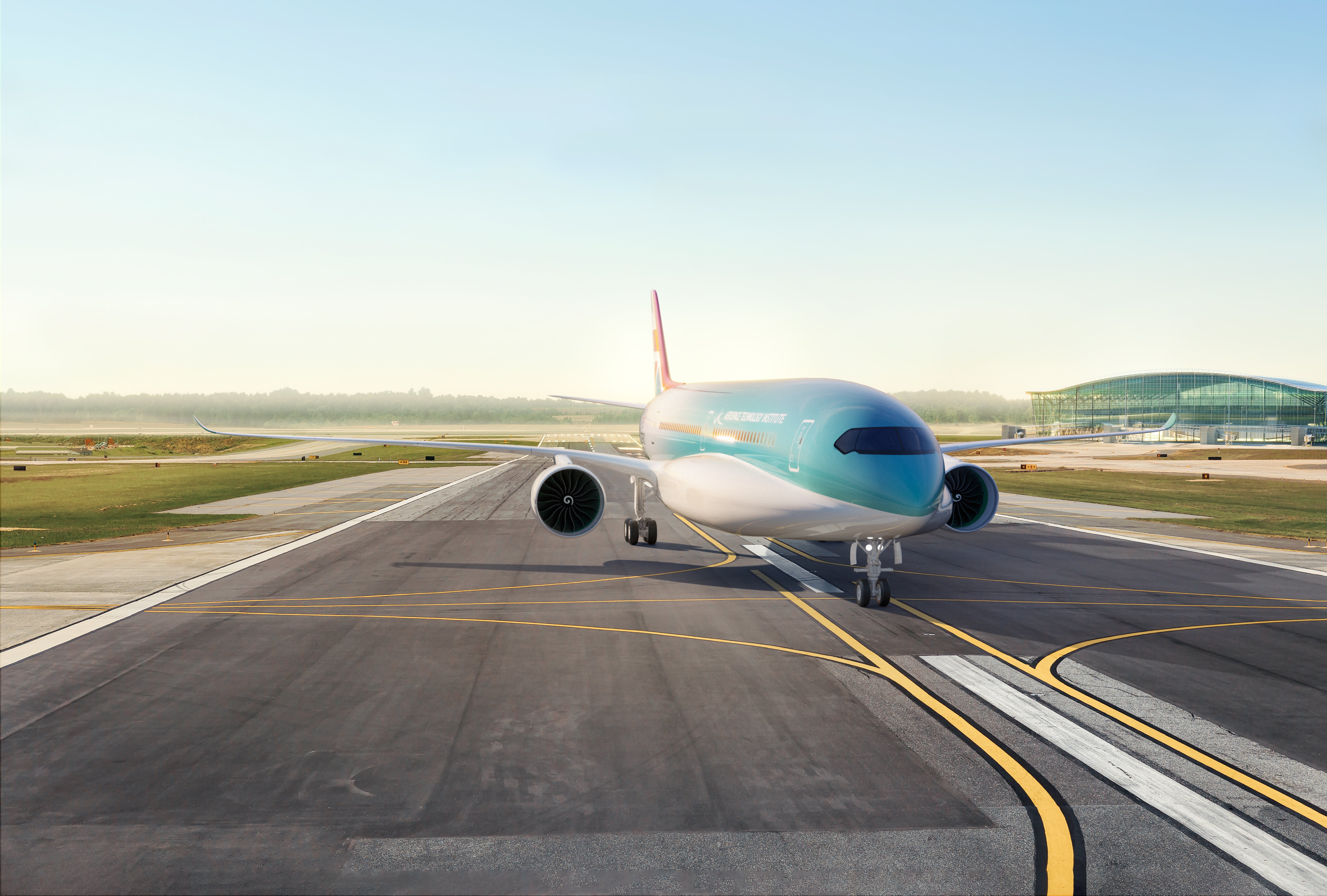Click Here to View This Page on Production Frontend
Click Here to Export Node Content
Click Here to View Printer-Friendly Version (Raw Backend)
Note: front-end display has links to styled print versions.
Content Node ID: 419329
The UK’s Aerospace Technology Institute (ATI) today unveiled a concept for a hydrogen-powered midsize, long-haul airliner that it says will be able to carry 279 passengers on flights of up to 5,250 nm (6,037 miles). The plans are part of the joint FlyZero initiative, supported by government and industry funding, to achieve zero-carbon air transportation.
Conceptual drawings and information released on December 6 are a preview of more detailed proposals that the FlyZero partners say they will reveal in early 2022. In addition to the midsize airliner, these are expected to include alternative proposals for “regional” and “narrowbody’ aircraft powered by liquid hydrogen.
ATI said the detailed findings from the 12-month FlyZero research project will include a technology roadmap, sustainability assessment, and “market and economic” reports. The organization has not confirmed whether the intention is to bring a hydrogen-powered aircraft to market or to tap the technologies developed under the plan for some other application. However, it did indicate that it views hydrogen-powered airliners as being commercially viable from the mid-2030s, which corresponds with when Airbus plans to bring one or more of its ZeroE aircraft to market.
The few details released by ATI envision combining technologies such as wings without fuel tanks, cryogenic liquid hydrogen tanks, fuel cells and electrical power systems, and hydrogen gas turbines. According to the announcement, the “midsized” aircraft would have a 177-foot wingspan and a pair of turbofan engines powered by direct combustion of hydrogen. The fuel would be stored in a pair of cryogenic fuel tanks in the aft fuselage and two smaller "cheek" tanks in the forward fuselage to maintain balance as the fuel is consumed.
Operating from London, the aircraft would be able to fly nonstop to cities such as San Francisco, Delhi, Beijing, Vancouver, Mexico City, and Rio de Janeiro. ATI said that it is expected to operate at comparable speeds to current airliners.
“At a time of global focus on tackling climate change, our midsize concepts set out a truly revolutionary vision for the future of global air travel keeping families, businesses, and nations connected without the carbon footprint,” commented FlyZero project director Chris Gear. “This new dawn for aviation brings with it real opportunities for the UK aerospace sector to secure market share, highly skilled jobs, and inward investment while helping to meet the UK commitments to fight climate change.”
The FlyZero project team includes around 100 experts from multiple companies, including Airbus, Rolls-Royce, GKN Aerospace, Spirit AeroSystems, GE Aviation, Reaction Engines, NATS, EasyJet, and Eaton. Airbus conducts some wing manufacturing in the UK, but has not said whether its Broughton and Filton facilities will be involved in building the proposed ZeroE aircraft. These aircraft concepts announced by the European aerospace group in September 2020 would seat up to 200 passengers and operate on routes of up to 2,000 nm, which is less than half the range envisioned by the ATI plan.
According to ATI, the FlyZero concepts are primarily aimed to support technology demonstration in support of achieving longer-term goals for zero-carbon emission flights. "While this aircraft will remain as a concept, the findings from FlyZero are intended to help the UK aerospace sector and its supply chain capitalize on the opportunities a new generation of aircraft will bring," an ATI spokesman told FutureFlight.
The institute has committed £3.9 billion ($5.2 billion) in public and private funds for research work through 2026. In June 2020, the French government announced plans to invest €15 billion ($17 billion) in green aviation initiatives, including hydrogen propulsion and biofuels.
